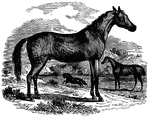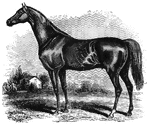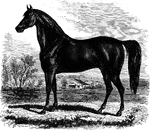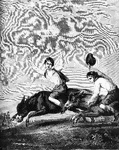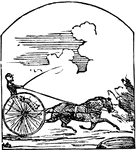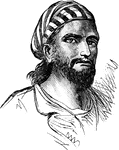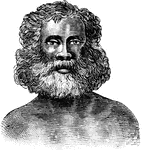
House Sparrow
The House Sparrow is lively, pert, and cunning, the true gamin of the winged race,(Figuier, 1869).

House Sparrow
The House Sparrow is lively, pert, and cunning, the true gamin of the winged race,(Figuier, 1869).

Aesop's Fables
The Hare and the Tortoise. The tortoise crosses the finish line ahead of the hare. Slow and steady wins…

Cuban Mastiff
A dog breed native to Spain. "The present beed is a strong and courageous race, of moderate intelligence:…

Civil War Musical Entertainment
"Extempore musical and terpischorean entertainment at the United States arsenal, Baton Rouge, La., under…
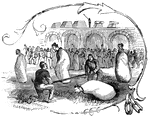
Hurdle Sack Race
"Federal soldiers participating in a hurdle sack race. Thanksgiving festivities at Fort Pulaski, Ga.,…

Wheelbarrow Race
"Soldiers aparticipating in a wheelbarrow race. Thanksgiving festivities at Fort Pulaski, Ga., Thursday,…
!["The war in Virginia- contrabands coming into the Federal camp. The [African American] furnishes, in his various phases of existence, wonderful studies for the artist and philosopher. Never, perhaps, has a race seen such a moment as during the Civil War, when the chains of bondage were breaking from the limbs of 4,000,000 of men. The distant roar of battle was to them a sound of deliverance. With all the uncouth, odd and queer manifestations of joy they prepared to reach the camp of the delivering Yanks. Yoking together most incongruous teams before the farm wagons of their fled masters, with ass and ox and horse, with household gear queerly assorted, with useless truck and little that could rarely serve them, they started for the Promised Land, and might often have been seen coming in as our artist, a most close student of nature, depicted them, with his usual felicity of portraiture."— Frank Leslie, 1896](https://etc.usf.edu/clipart/11700/11752/contrabands_11752_mth.gif)
Contrabands
"The war in Virginia- contrabands coming into the Federal camp. The [African American] furnishes, in…

Ten Broeck
"The fastest race horse in the world. His best time, May 24, 1877, was 1.39 for one mile." — S. G.…

Germans
"Early Germans. These German ancestors of ours, for so we must consider them, since the chief element…

Golden Carabus and Cock-Chafer
"In illustration of the savageness of this race, the author of the "Jardin des Plantes" tells us of…
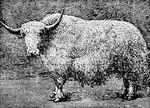
Yak
"Yak is a species of ox from the mountainous regions of Tibet. There are two races: the wild yak, generally…

Greek philosophers
"Greek Philosophy, which reached its highest excellence in Athens in the fourth century before Christ,…

Water Rice
"Rice is a well known genus of grasses, having panicles of one-flowered spike-lets, with two very small…
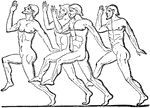
Foot-race
"The Olympic games were of greater efficacy than the Amphictyonic Council in promoting the spirit of…

Wrestling
"The Olympic games were of greater efficacy than the Amphictyonic Council in promoting the spirit of…
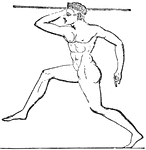
Hurling the javelin
"The Olympic games were of greater efficacy than the Amphictyonic Council in promoting the spirit of…

Boxing
"The Olympic games were of greater efficacy than the Amphictyonic Council in promoting the spirit of…
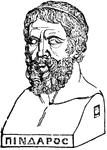
Bust of Pindar
"Pindar, though the contemporary of Simonides, was considerably his junior. He was born either at, or…
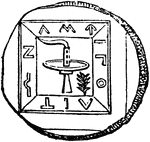
Lampadephoria
"Lampadedromia, torch-race, and often simply, Lampas, was a game common throughout Greece. At Athens…
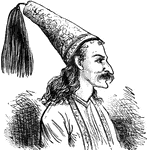
Greek
"The Greeks belong to the great Indo-European race, who from the earliest times have been the conquerers…
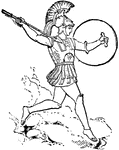
Mars
The god of war, corresponding to the Greek Ares. He was the son of Juno, and as father of Romulus was…

Mound Builders
Mount Builders, the name applied to a prehistoric race of North America, of which remarkable remains…
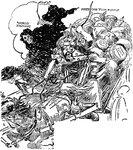
Do Your Bit
A political cartoon describing civilian answers to the new war cry. This cartoon title is "Do Your Bit."…

Water Wheel
"When a water fall ranges between 10 and 70 feet, and the water supply is from 3 to 25 cubic feet per…
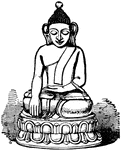
Buddha
"The sacred name of the founder of Buddhism, an Indian sage who appears to have lived in the 5th century…
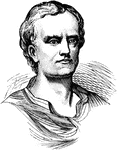
Caucasian
Caucasians typically have the lowest degree of projection of the alveolar bones which contain the teeth,…
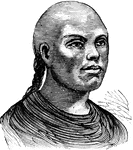
Asian
The chief characteristics of the Asian race are: broad head; angular face; high cheek-bones; small,…
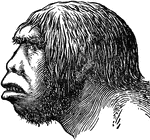
Neanderthal Man
The head of a Neanderthal man during the Early Paleolithic Age. The Neanderthal men are an extinct race.
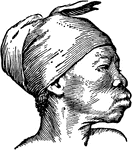
Mediterranean Bushwoman
In the early developments of the races of mankind often groups were named based on common characteristics.…

Early Races, Mongolian
in early development of race, the Mongolian type consistent of Kalmucks, Chinese, and Amerindians.

Early Races, Caucasian
in early development of race, the Caucasian type consisted of Mediterranean men (Jews of Algiers), Mediterranean…

Racial Types From Egyptian Paintings
Early developments of racial types, a tomb paint from an Egyptian tomb.

Stone Carvings of Sumerian Warriors
Perhaps the earliest people to form real cities in the western region of the world, were a people of…

Herdsman of the Alps
"The herdsman of the Alps leads a life peculiar to his race and land."-Lupton The Alps are located in…

Atalanta's Race
The race with Hippomenes' for Atalanta's hand in marriage. He won by distracting her with beautiful…





